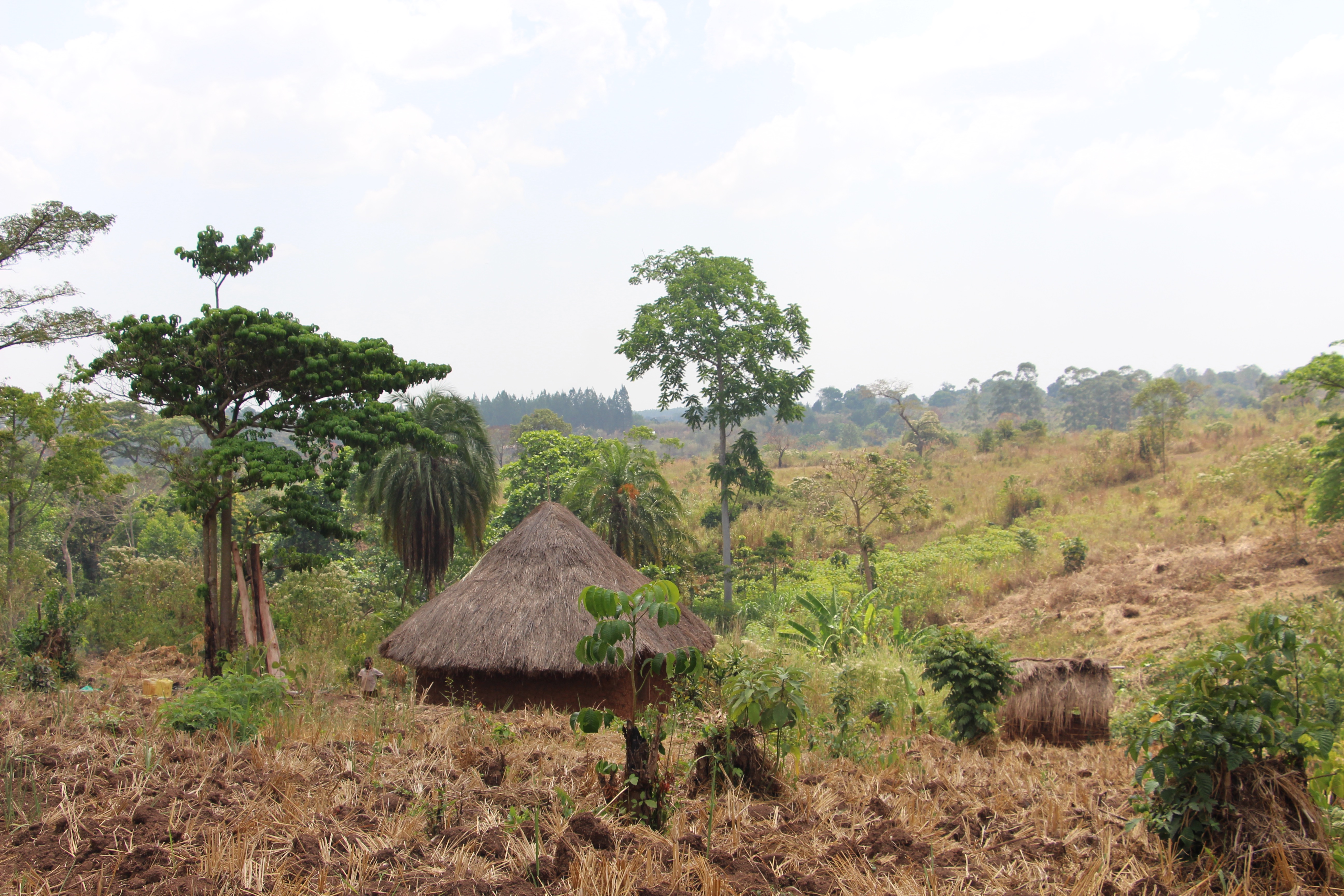
Innovation conjures images of people in white coats examining test tubes with awe. Or the CEO of a trendy tech start up, dressed all in black, introducing a revolutionary technology. Innovation makes us think of spur of the moment ideas and historical discoveries.
You might not think that small church with dirt floors in Kicunda village, Uganda, 30 km from the nearest town center could be a hub of innovation. But at Village Enterprise, villages like Kicunda are our labs and staff members like Mildred Wengozi are our innovators in white coats.
Yesterday I accompanied Mildred as she conducted an audit on a module we are piloting on business planning. We designed this tool to empower our business owners, many of whom are illiterate and have never attended secondary school, to plan for the various activities that will make their business successful.

Mildred explains the audit process to our business owners.
Mildred and I sat with business owner after business owner asking questions about their use of the tool, probing as much as possible. Designing tools like these for the ultra poor requires in-depth feedback. Lacking formal education, our business owners often do not have strong critical thinking and problem solving skills. As such, our tool needs to provide both a concrete tool for immediate use as well as foster the soft skills needed to complete the process in the future. Gauging its success in both of those areas is a multi-step, labor-intensive process.
Innovation is core to who we are as an organization–it is in our DNA. Our SMART tool (Smart Market Analysis Risk Tool) was recognized as one of the Rockefeller Foundation’s top 100 next century innovations. We are also immensely proud to be on the cutting edge of using Taroworks and Salesforce to digitize our Monitoring and Evaluation (M & E) systems. But what I love most about our innovations team, and what I think makes Village Enterprise’s innovations so extraordinary, is that Mildred and I returned from a day in ‘the lab’ in a local taxi, covered in dust, having spent a day making sure that we are innovating with and for our business owners. Our innovations are bottom up.
One of my favorite examples is our Family Support module. Our Business Mentors (field staff responsible for training and mentoring our business owners) reported that many women business owners were struggling to maintain high savings and invest in profitable businesses because they did not have the support of their husbands and families. Saving money each week for growing a business requires sacrifice and family buy in. For example, it could mean that a family is eating chapati or meat less often or foregoing sugar in their tea in order to put a small sum of money away each week for the future.
Out of this need, our innovations team went to work designing a “Family Support” module. The module is the one of our first trainings. Business owners are encouraged to attend with their spouses and children. Family Support is now cited by our business owners as one of the most helpful trainings. In fact, one of our business owners, Ronald Okello, was so inspired when he attended the family support module with his wife, Jessica, that he continued to attend trainings and even began to train others in his community based on what he learned.

Business Mentor, Chris, trains business owners in Kicunda Village on business planning.
Innovating from the bottom up requires an established process. What starts as a problem, like female participants not being supported by their families, must inspire an idea–a solution. This idea must then be translated into a feasible implementation strategy. Our business mentors must then be trained on the strategy and why it is important. Next, we have to develop an M&E plan to determine how we will evaluate the piloted innovation’s effectiveness. The pilot must be rigorously monitored and evaluated to determine if it should be integrated into our program. This process requires thinking critically about how best to adapt implementation to our demographic. It requires Mildred and the rest of the innovations team to spend hours on public transportation and engaging with business owners. It is rarely glamorous, but it works.
At Village Enterprise we pride ourselves on combining rigor and cutting edge programming with interventions that work for the very bottom of the pyramid. Our system of innovations illustrates how when you’re working for the bottom of the pyramid, innovation must be driven from the bottom up. And while rural Uganda is not the most likely of innovations hubs, we’ve found it to be the best of laboratories.